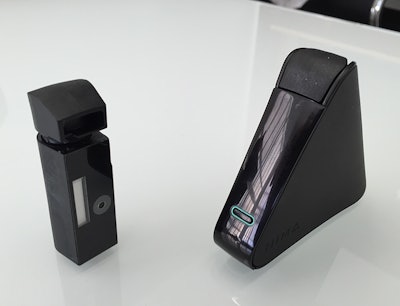
Devices that can inspect food at a molecular level that are no bigger than our smartphones are being developed that promise to make major progress in preventing food poisoning, according to The Wall Street Journal.
The Nima from 6SensorLabs is an organic-chemistry lab small enough to carry in your pocket. Right now it is only good for one thing: detecting gluten in foods at minuscule concentrations, as little as 20 parts per million, the FDA’s threshold for declaring a food “gluten-free.” At $250 for the device and $5 per disposable reaction chamber, it isn’t for the trendy gluten avoider, but rather diagnosed celiac sufferers who become seriously ill when they are “glutened” by packaged goods and restaurant fare that isn’t carefully prepared.
But in the future, says 6SensorLabs co-founder and chief executive Shireen Yates, it could be adapted to recognize all manner of proteins—including ones that would allow it to recognize bacterial contaminants such as E. coli and salmonella.
The Nima accomplishes in twominutes what would otherwise require days when sent off to a normal lab. In this way it is typical of a new breed of sensors that are cheap and fast enough to add more layers of inspection to our food system, for suppliers, restaurants and even individual consumers.
Another such technology—the workings of which are a trade secret—allow the founders of Safe Catch to offer what they claim is the world’s lowest mercury-contaminated canned tuna fish. Their process allows them to inspect every single fish as soon as it comes off the boat, rather than sampling just a small percentage of them, says co-founder Sean Wittenberg. Marketed as safer for anyone worried about mercury in their seafood, including pregnant women, Safe Catch shows how testing of all of our food, rather than sampling of a small percentage of it, has the power to transform what we think of as safe to eat.
To read more, click here.



















